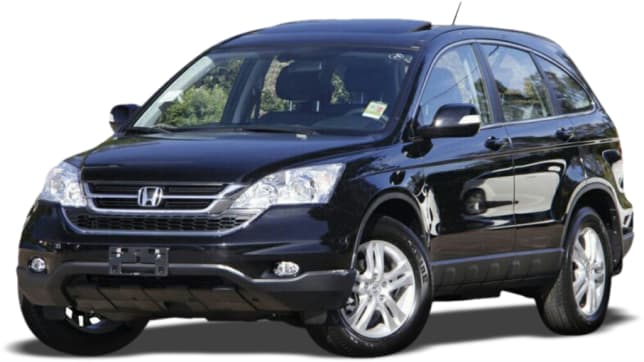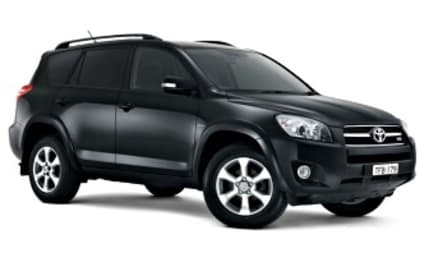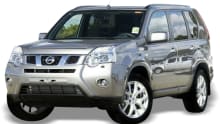
Used Honda CR-V review: 2012-2017
- Honda CR-V
- Honda CR-V 2017
- Honda CR-V 2012
- Honda CR-V 2013
- Honda CR-V 2014
- Honda CR-V 2015
- Honda CR-V 2016
- Honda CR-V Reviews
- Honda Reviews
- Honda SUV Range
- SUV
- Honda
- Used Car Reviews
- Family Cars

What we like
- Five-star ANCAP rating
- Well equipped with active safety features
- Generous boot space
What we don't
- Air-conditioning not great
- Takata airbag recall
- Not good off-road
What we like
- Five-star ANCAP rating
- Well equipped with active safety features
- Generous boot space
What we don't
- Air-conditioning not great
- Takata airbag recall
- Not good off-road
Remember that old saying: “If it’s not broke, don’t fix it.” Well, that was Honda’s approach when it released the new 4th generation CR-V in 2012.
Honda was an early adopter of the SUV, it was very successful with the earlier generations of the CVR-V, and stuck to its tried and true game plan with the new RM model.
A great all-rounder for today's average family, the SUV is an attractive blend of practicality, flexibility and comfort that also adds the safety, driveability and performance of the sedans and hatches we once favoured.
So popular had the SUV become by 2012 that Honda, which had one of the few SUVs back in 1997 when it released the first CR-V, faced stiff competition with most rival carmakers offering SUVs.
Models
While Honda followed the familiar SUV formula of a high-riding wagon, it expanded its offering by introducing new front-wheel drive models, and brought in a diesel engine.
The range consisted of five models, the Thailand-made VTi, VTi-S and VT-L petrol models, and the UK-built DTi-S and DTi-L turbo-diesels.

At the entry point of the range was the VTi, which could be had with a 2.0-litre four-cylinder engine with the choice of a six-speed manual gearbox or five-speed automatic, and front-wheel drive.
It could also be had with a 2.4-litre petrol engine, but then only with a five-speed automatic transmission, and all-wheel drive.
Even as the base model in the range the VTi was well-equipped, boasting standard features like 17-inch alloy wheels, air conditioning, Bluetooth allowing iPhone and Android device connection, MP3 connectivity, reversing camera, CD player, cruise control, driver's footrest, multi-function colour control screen, power windows and mirrors, trip computer, and heaps of storage possibilities.
It was also well equipped with active safety features, including ABS anti-lock braking, electronic stability control, traction control, electronic brakeforce distribution, and a hill holder.
On top of that it had passive safety features including, dual front airbags, head airbags for front and rear seat occupants, and side front airbags for those in the front.
The VTi-S was a sporty variant that came standard with the 2.4-litre four-cylinder engine, a five-speed paddle-shift automatic transmission, and on-demand all-wheel drive.

Over and above the VTi the VTi-S had front fog lights, a DVD player, dual-zone climate control air conditioning, automatic headlights, sat-nav, leather steering wheel, roof rails, rain-sensing windscreen wipers, rear parking sensors, auto dipping rear view mirrors to aid reversing.
At the top of the range was the VTi-L, which came standard with the 2.4-litre four-cylinder engine, the five-speed automatic transmission, and on-demand all-wheel drive.
Naturally it had the longest list of standard features, with 18-inch alloy wheels, key proximity central locking, keyless starting, front park sensors, powered and heated front seats, active headlights, leather trim, and a power sunroof.
There was no park assist system, but the spare wheel was a full-sized one.
The demand for diesel engines saw Honda add the UK-built DTi-S and DTi-L to the range.
Both had 2.2-litre four-cylinder common-rail turbo-diesel engines, with the choice of a six-speed manual gearbox or a five-speed automatic transmission, and on-demand all-wheel drive.
They were similarly equipped to their petrol-engined equivalents.
A Series II update arrived in 2015 and brought further refinement and a raft of new features, like a side vision camera, touch screen, a blind spot camera, and Honda’s Advanced Driver Assist System, which included autonomous emergency braking, adaptive cruise, and lane-keeping assistance.
There was no park assist system, but the spare wheel was a full-sized one.
Cabin
The CR-V with its upright stance and large glass area had an airy and pleasant cabin with five seats to accommodate two in the front and three in the rear.
They would have found it roomy and comfortable with good head and legroom whether in the front or the back.
The CR-V also boasted heaps of storage options for carrying everything a family needed when on the move.
Cupholders were conveniently provided in the front and the rear.
The boot space was also generous, with 556 litres available when the 60/40 split-fold rear seat was upright, and as much as 1120 litres when it was folded flat.
Lap-sash seat belts for all seats allowed the fitment of a baby car seat, and ISOFIX mounting points were fitted from 2013 on the diesel variants, and 2014 across the rest of the range.
Engine
The CR-V’s engines boasted Honda’s acclaimed i-VTEC variable valve timing technology, with dual camshafts and four valves per cylinder.
The base engine was the 2.0-litre four cylinder, which put out 114kW – 153 horsepower – and 19 Nm. Its performance was modest, particularly on the highway when the CR-V was loaded to the max with people and luggage.
For better performance there was the larger 2.4-litre engine. That put out 140kW – 188 horsepower – and 222Nm for a better blend of performance and economy.

Perhaps the best performer was the 2.2-litre four-cylinder DOHC common-rail turbo-diesel – Honda’s first – which answered the growing demand for diesel engines.
It put out 110kW and 350Nm; the massive torque the key to smooth, flexible performance that made the diesel version very driveable.
Of course it was also the most economical engine, boasting a combined average consumption of 6.7L/100km compared to the 7.7-7.8L/100km of the 2.0-litre petrol engine and the 8.7 L/100km of the 2.4.
All engines were chain driven, hence there was no call for regular replacement.
The transmission options were a six-speed manual gearbox or a conventional five-speed automatic.
Driving
While SUVs started out as light-duty offroaders that could withstand the occasional offroad excursion on bush tracks or beaches they’ve had to become more car-like as they’ve been adopted by owners wanting a practical car for everyday use and have no intention of going off the blacktop.
The result is a car that is more refined, comfortable, and car-like in its dynamics.
That trend didn’t escape Honda’s attention, and the CR-V evolved in this direction.
As a result it’s refined, the road noise is relatively subdued, and it’s comfortable and practical for family use.

The performance of the 2.0-litre engine was modest; the larger 2.4-litre engine was the better choice for a blend of economy and performance.
For the best blend the diesel stood out; it not only had the fuel consumption of a diesel, it also had the driveability that comes with torque of the sort only a diesel can produce.
The transmission options were a six-speed manual gearbox or a five-speed automatic transmission.
Buyers also had the choice of on-demand all-wheel drive, or front-wheel drive.
The latter was clearly aimed at those who simply wanted the practicality of a wagon without the cost and complication of the all-wheel drive technology.
With the demand for car-like road manners the CR-V rode with comfort, steered well, and handled with assurance.
Safety
ANCAP gave the RM CR-V a top-of-the-table five-star tick of approval.
It came courtesy of a comprehensive array of active and passive safety features.
The active systems consisted of ABS anti-lock braking, electronic brakeforce distribution, traction control and electronic stability control.
If all of that wasn’t enough to avoid a crash there were dual front airbags, head airbags and side front airbags to minimise the consequences.
Any common issues?
Honda has long been renowned for its design and build quality, and the fourth generation RM CR-V was similarly highly rated.
Owners we consulted generally expressed high praise for the reliability of their cars.
The main complaints that came from our survey were that the air-conditioning wasn’t great, and the performance of the 2.0-litre petrol engine was adequate, but not thrilling.
In some respects Honda took a conservative approach with the RM, like choosing to stick to a conventional automatic transmission while others plunged into new-age alternative autos, such as the dual-clutch auto and CVT.
That’s good news for those unconvinced by the new-age autos, they don’t have to worry about the glitches that have plagued some other brands.
The CR-V is no off-roader, so be wary of any car that appears to have been used that way.

Also check for a service record that shows the car you are considering has been well maintained.
Honda recommended servicing the CR-V every six months or 10,000 km.
Capped price servicing was introduced in and the RM CR-V is covered from 2013 on, but service costs are not excessive in any case.
The warranty when new was for three-years/100,000 km, and some later cars will still be covered.
There are a couple of recalls to be aware of, most notably the Takata airbag recall, but there was also another one that affected a number of vehicles.
That latter one related to a glitch in the automated braking system that was supposed to recognise potential hazards and apply the brakes in an emergency stop to avoid a crash. The problem was that it sometimes got it wrong and applied the brakes when there was no emergency at all.
The sudden and heavy application of brakes could not only scare those in the car, but also those in other cars around tem.
It’s imperative that you check to see if you car has been through the rectification process to correct the faults. To do that check with a Honda dealer.
MORE: If anything crops up, you’ll probably find it on our Honda CR-V problems page
Owners View
Geoff Baker: The RM CR-V is the perfect family car. I love the design; the front and rear parking sensors and rear view camera make parking a breeze. My only criticism would be the fuel consumption, but otherwise I’m very happy.
Chris Cameron: The CR-V is okay, but the fuel consumption is high and the fuel tank is too small.
Jeremy Page: Ours is a 2015 VTi-S. It does everything well. It’s well finished, has a quality feel inside, is very practical with plenty of room and good luggage space.
Jim McKenzie: I have a 2014 VTi-S. It has heaps of room, a huge boot, but the engine lacks performance.
Rivals
Nissan X-Trail – Roomy and practical, and quite capable off-road.
3 stars.
Mazda CX-5 – Arguably the best driver of the SUV bunch.
3.5 stars.
Toyota RAV4 – Good all-rounder with legendary Toyota reliability.
3.5 stars.
Verdict
Roomy, practical and well equipped SUV well suited to the family.
Pricing
| Year | Price From | Price To |
|---|---|---|
| 2017 | $16,830 | $36,740 |
| 2016 | $15,730 | $30,470 |
| 2015 | $13,420 | $26,400 |
| 2014 | $12,100 | $23,760 |
| 2013 | $11,110 | $22,000 |
| 2012 | $7,920 | $18,920 |
Pricing guides
Range and Specs
| Vehicle | Specs | Price* | |
|---|---|---|---|
| (4X4) | 2.4L, ULP, 5 SP AUTO | $12,100 – 16,170 | 2012 Honda CR-V 2012 (4X4) Pricing and Specs |
| VTi (4x2) Navi | 2.0L, ULP, 5 SP AUTO | $12,540 – 16,720 | 2012 Honda CR-V 2012 VTi (4x2) Navi Pricing and Specs |
| (4x4) Limited Edition | 2.4L, ULP, 5 SP AUTO | $11,660 – 15,510 | 2012 Honda CR-V 2012 (4x4) Limited Edition Pricing and Specs |
| VTi (4x2) | 2.0L, ULP, 5 SP AUTO | $11,660 – 15,620 | 2012 Honda CR-V 2012 VTi (4x2) Pricing and Specs |
Other cars to consider
$8,990
Lowest price, based on 31 car listings in the last 6 months














